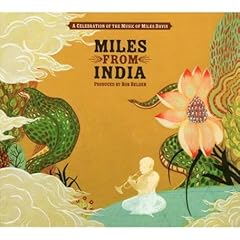Taylor, the pianist beyond genre (age: 80) and still-groundbreaking music of Davis, the trumpeter/conceptualist (dead 18 years) are at major Manhattan venues this week, continuing to provoke and gratify. Cecil Taylor performs at the Blue Note tonight (Thursday, May 28) while “Miles From India,” mixing veterans of Davis’ electric bands with South Asian improvisers, has a four-night stand at Iridium. And last Monday, Davis’ prophetic On The Corner was revisited at Merkin Concert Hall.
Frequent readers of this blog know I’m fascinated (not obsessed) with Davis, Taylor and Ornette Coleman, who (as I write in my book published in 2008) opened myriad possibilities for jazz and other forms of music by leaving conventions behind. They didn’t do this alone: all three musicians created their best-known works with the help of imaginative collaborators, and generations of players have taken up their directions, continuing their explorations.
 and acoustic-era Miles (like tracks from his 1959 masterpiece Kind of Blue) to a likely, if not predictable intermingling with the high art of Indian improvisation. Miles was famously an early proponent of modal jazz, and Indian traditional musics have been characterized (wrongly, according to Rudresh Mahanthappa) as modal — that is, not based on Western European chords and harmonic concepts. These principles matter more directly to musicians than to listeners; in practice, Miles’ music (interpreted by such of his stalwards as Liebman, Roy, Ron Carter, Jimmy Cobb, Chick Corea) and the South Asian players’ (notably keyboardist Louis Banks) cohere without conflict, arriving at new if not always revelatory conclusions.
and acoustic-era Miles (like tracks from his 1959 masterpiece Kind of Blue) to a likely, if not predictable intermingling with the high art of Indian improvisation. Miles was famously an early proponent of modal jazz, and Indian traditional musics have been characterized (wrongly, according to Rudresh Mahanthappa) as modal — that is, not based on Western European chords and harmonic concepts. These principles matter more directly to musicians than to listeners; in practice, Miles’ music (interpreted by such of his stalwards as Liebman, Roy, Ron Carter, Jimmy Cobb, Chick Corea) and the South Asian players’ (notably keyboardist Louis Banks) cohere without conflict, arriving at new if not always revelatory conclusions.howardmandel.com
Subscribe by Email |
Subscribe by RSS |
Follow on Twitter
All JBJ posts |
